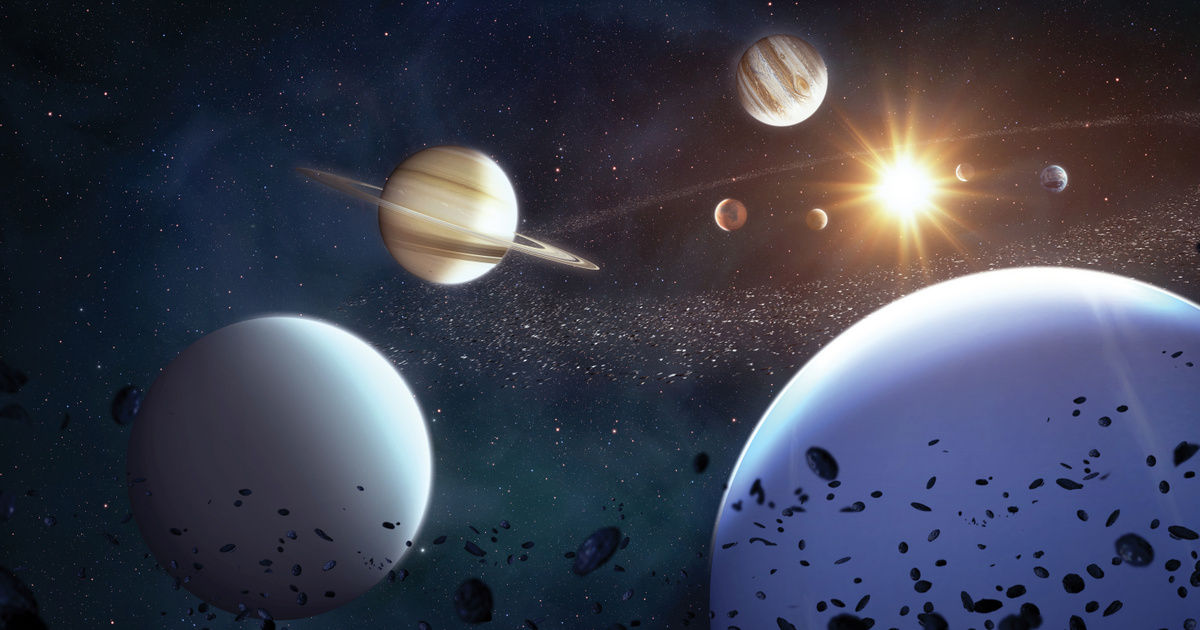Most of us can list the eight planets of the solar system offhand, and probably know the differences between them. There are the rocky terrestrial planets: Mercury, Venus, Earth, and Mars, and the giant Jupiter-like planets, namely Jupiter, Saturn, Uranus, and Neptune. Michael E. Brown is an American astronomer according to However, there is also a ninth planet. In 2016, he and his colleagues at the California Institute of Technology (Caltech) proposed the possibility of a giant planet ten times the mass of Earth that could end up at the edge of the solar system. System.
It's been nearly 200 years since astronomers discovered a new planet in our solar system, but how did they find a new planet when the technology was still in its infancy? Already in the nineteenth century, calculations and predictions were made regarding the size and position of the planets from anomalies observed using telescopes. The newest member of the solar system is already 178 years old. Neptune was discovered in 1846 by a French and English astronomer. Urban Le Verrier and John Couch Adams independently observed that Uranus, discovered 60 years ago, had an anomaly in its orbit that could only be explained by the presence of another, more distant planet.
Brown and his team's speculation matured 8 years ago into a lesson, was published, but is still awaiting peer review. In the research, the movement of objects at the edge of the solar system was simulated, and from here they concluded that there is a one in a million possibility of the existence of a ninth giant planet in our solar system. According to Michael Brown, this is due to the movement of dwarf planets and asteroids orbiting farther in the solar system. These are called trans-Neptunian objects, or TNOs, and astronomers study signals from gravitational patterns coming from them. They speculate whether the detected gravitational waves are not generated solely by clusters of small space rocks. Since the beginning of 2021, the Vera C. Rubin Observatory in Chile has been scanning the sky in search of Planet Nine.
Shadow of doubt
The largest known body after Neptune is Eris, and it has been suggested that it will be Planet Nine, but it is not. Some trans-Neptunian objects have extreme orbits and do not revolve around the Sun in a circular orbit, but rather extend their motion into interstellar space before returning to Neptune.
Since 2003, we have known about 90377 Sedna, a trans-Neptunian dwarf planet that moves in a long, narrow orbit. A 2016 study looked at the motions of trans-Neptunian objects, such as Sedna, and calculated a 99.993 percent probability that the objects' strange orbits were not due to chance, but rather to a planet much larger than Earth and far away from daylight. Brown's team examined 17 trans-Neptunian objects with less extreme orbits that are not very far away in the solar system, and the team ran several simulations based on
It is almost impossible that there is no ninth planet.
A new study conducted by the Browns was published at the beginning of the year, in which they describe that they have already carefully surveyed 78 percent of the supposed area of the new planet, but have not found anything yet. It's well hidden, or the remaining 22 percent are hiding it. But as theoretical physicist Katherine Brown (no relation to Michael Brown) says, unusual planets require unusual evidence. However, skeptics say that the six trans-Neptunian objects in the study conducted 8 years ago were selected from different analyzes of the sky, which may have biased the analysis. There is also an existing hypothesis that a small black hole is hiding behind the orbit of trans-Neptunian objects.
Incidentally, Michael Brown has also suggested that our understanding of gravity is wrong, since the orbit of objects at the edge of our solar system is not the only unexplained cosmic phenomenon. To prevent collapse, galaxies need more mass than scientists think. Maybe dark matter is the missing mass, or, according to the new theory, an undiscovered aspect of gravity? According to Brown, “modified Newtonian dynamics” (Modified Newtonian dynamics, Tells) may also explain the strange orbits of the six trans-Neptunian objects analyzed in their 2016 work.
last summer In his studies By the way, a group of South Korean astronomers wrote that MOND could explain why Newton and Einstein's theory of stellar motion is incorrect: the force of gravity at large distances is not proportional to the square of the distance, but is inversely proportional to the distance. This is the reason for their irregular movement. So we are about to discover a new planet or a new law of attraction. None of them will be sponge cakes.














































